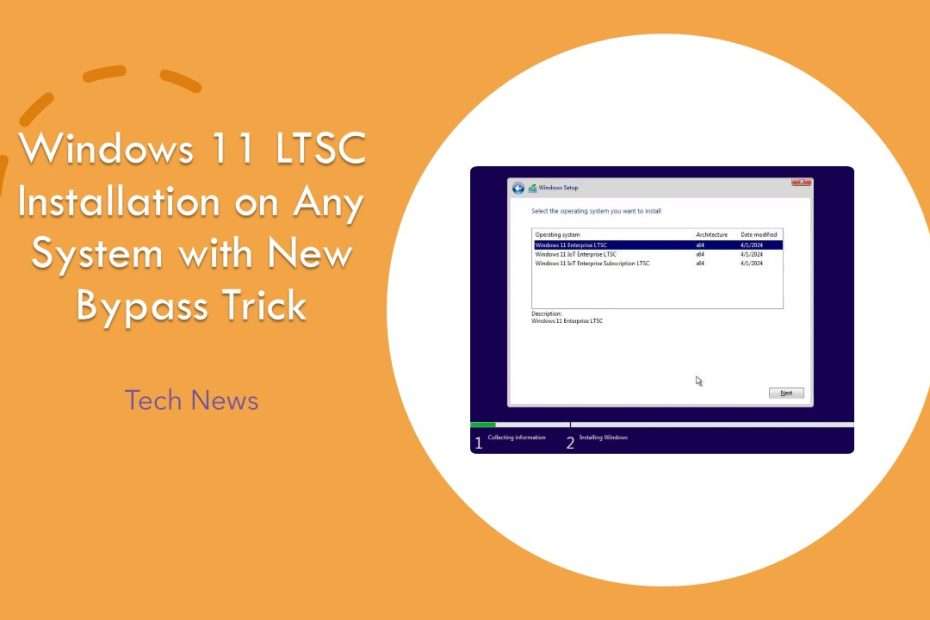A recent discovery concerning bypassing the Windows 11 system requirement check during installation has proven to be more significant than initially realized. This method, uncovered earlier this month, offers a streamlined one-click solution to circumvent the system requirements checks. By opting for the Windows 11 IoT Enterprise LTSC edition, originally designed for specialized hardware, users can bypass the hardware compatibility check entirely, facilitating the installation process. This bypass trick extends beyond Windows 11 to Windows IoT, which delivers a standard Windows experience with the added flexibility of conserving storage space on smaller devices.
Moreover, the Windows Server Long-Term Servicing Channel (LTSC) edition, which follows a release cycle of major upgrades every 2 to 3 years, offers users extended support and stability. This edition ensures five years of mainstream support, with an additional five years of extended support, providing a long-term servicing option for users. Microsoft emphasizes the LTSC edition’s consistency and reliability, making it an appealing choice for those prioritizing stability and longevity in their operating systems.
Just found out that it also applies for the regular Windows 11 IoT Enterprise edition (non-LTSC) when picked in the Windows Setup.
— Bob Pony (@TheBobPony) April 20, 2024
It's pretty clear that IoT Enterprise is the SUPERIOR edition of Windows 11, no need to bypass any system requirements B.S. with any workarounds! 🎉 https://t.co/ErkbaNglZ8 pic.twitter.com/SzKaNRwbWO
The discovery of the bypass trick for LTSC editions, initially shared by a user, has been confirmed to also work for non-LTSC versions of Windows, starting with version 24H2. Bob Pony, the user who disclosed the method, revealed that opting for the “IoT Enterprise” option during Windows 11 installation is the key to employing this bypass. This version of Windows, intended for compact hardware with limited storage capacities, offers users the flexibility to modify their systems while retaining the core Windows experience.
Microsoft’s development of Windows LTSC primarily targets companies and organizations seeking to minimize frequent Windows updates or testing new features in their developmental stages. Now, with the revelation of the one-click bypass method, Windows IoT, which mirrors regular Windows consumer editions, can also be installed on older systems. This discovery comes at a time when Windows 11’s stringent hardware requirements have limited its accessibility to many PC users, prompting individuals to explore alternative methods to install the OS despite compatibility issues, such as the absence of support for x86 CPUs in newer versions of Windows 11.
The Windows IoT Enterprise OS family, formerly known as Windows Embedded, encompasses various Windows editions tailored for use in “small-footprint” PCs, point-of-sale devices, and other embedded appliances. These editions are specifically designed for companies, providing a streamlined solution for deploying Windows on specialized hardware. Despite Microsoft’s official hardware support limitations, Windows IoT editions offer straightforward installation processes, making them accessible even with hardware components not officially endorsed by Microsoft.
These Windows IoT editions are favored for their versatility and compatibility with a wide range of devices, making them a popular choice for businesses seeking to integrate Windows into diverse hardware environments. The simplicity of installation further enhances their appeal, allowing companies to deploy customized Windows solutions without extensive hardware constraints.
Maybe you liked other interesting articles?

